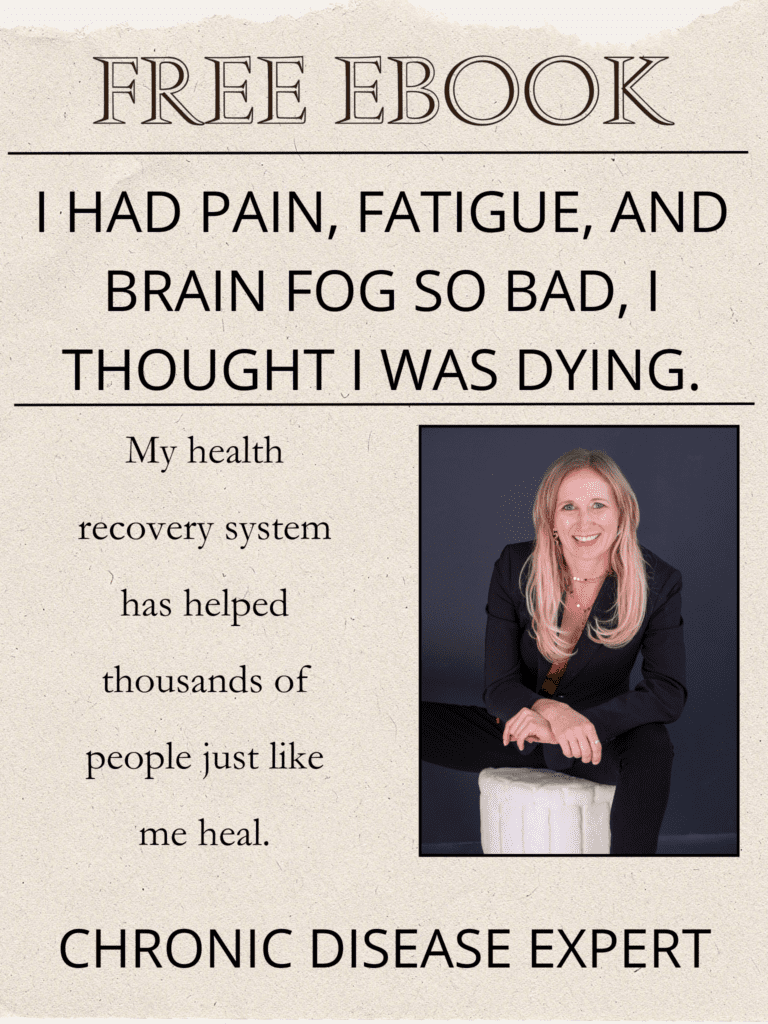
Written by Dr. Diane Mueller: We’ll be diving into what to do after Lyme disease treatment diving into post-treatment care that are essential to maintaining health and preventing recurrence. Lyme disease has a high rate of recurrence. It might be puzzling, but there’s a scientific explanation: Lyme can convert into dormant and persister cells. Though antibiotics often clear Lyme from the blood, these persister cells can hide out, leading to flare-ups down the road.
Unexpected Flare-ups Post Treatment
People often feel a lot better after lyme disease treatment, and just when they think they’re done, stress happens, and Lyme flares right back up. Sound surprising? It’s a more common phenomenon than you may think!
Managing stress after Lyme disease treatment is a critical aspect of recovery and prevention of recurrence. This multifaceted approach requires attention to both mind and body, emphasizing the need for continued wellness.
Techniques to Handle Stress
Breathwork: This technique involves focused breathing exercises, where you consciously inhale positivity and exhale negativity. By connecting with your breath, you create a calming effect that can help reduce stress and anxiety, leading to a more resilient mind and body.
Visualizations: Through the art of visualization, you actively engage your mind in picturing yourself in good health. This mental imagery process helps in creating a positive connection with your healing process, enhancing your overall well-being, and contributing to stress reduction.
Meditations & Calming Activities: Focused meditation, yoga, or other calming activities can be an oasis in a after Lyme disease treatment world. By investing time in these practices, you can find your inner Zen, allowing for a calm and focused mind. The process of meditation, especially, can foster a sense of inner peace and balance, guiding you away from the debilitating effects of Lyme and helping you align with a more positive, stress-free path.

Together, these techniques form a holistic approach to building stress resiliency, a vital component in managing Lyme disease after treatment. By embracing these practices, you not only fortify your mental and emotional defenses but also create a positive environment for complete healing.
We have helped thousands of people restore their health and quality of life by diagnosing and treating their Lyme Disease and Mold Illness.
Rebuilding and repairing the body post Lyme disease treatment is an essential step in preventing recurrence. Whether you’ve gone through antibiotic therapy or used natural herbs, treatments often have a significant impact on the body’s microbiome and hormonal glands. Addressing these areas is vital for fully recovering, as they play a huge role in energy production, anti-inflammatory processes, and overall well-being. Building up reserves and repairing these areas helps in maintaining good health post-treatment.
The microbiome, a complex ecosystem of good bacteria in our body, often becomes severely impacted by Lyme disease and its treatments. This disruption can harm the immune system, which needs to keep Lyme in a dormant stage. Rebuilding the microbiome becomes crucial post-treatment, not only to restore normal function but also to fortify the immune system, helping to keep Lyme disease at bay.
One of the significant parts of the rebuilding process is healing leaky gut and nurturing gut health. The gut plays a vital role in immunity, and if it’s hurt, the immune system’s capacity to keep Lyme dormant is compromised. Fixing gut health involves addressing the leaky gut issue, building up the microbiome, and creating a supportive environment for the immune system. This critical post-treatment step helps in ensuring long-term wellness and resilience against recurrence.
Building the microbiome also involves adding prebiotics, the food for probiotics. These include fibers and other nutritional elements that nourish the good bacteria in the gut. By adding prebiotics, you facilitate the growth and sustenance of healthy bacteria, which is essential for a well-functioning microbiome. This part of the process is vital for balancing the gut’s ecosystem and plays a crucial role in enhancing immunity and overall health after Lyme disease treatment.
Lyme disease and its treatment not only impacts the immediate area of infection but also other parts of the body. Particularly, the thyroid and adrenal glands often suffer. These glands are essential in producing hormones that control energy and help with anti-inflammatory processes. Lyme disease and its treatment can cause these hormones to become negatively impacted. This makes a thoughtful assessment and support of these glands a critical part of post-treatment care, especially if the body’s feedback loop between the brain hormone and thyroid is disrupted.
Building up hormonal reserves is another post-treatment component that you should focus on to prevent recurrence. Hormones that were destroyed or reduced during Lyme treatment need to be restored to maintain the body’s energy levels and anti-inflammatory responses. This restoration involves targeted measures such as monitoring and potentially supplementing thyroid hormones like free T3 and free T4. Ensuring the reserves are built back to normal levels not only aids in a complete recovery but also fortifies the body’s defenses against potential future health challenges. It’s a fundamental step in regaining balance and ensuring well-being after Lyme disease treatment.
When it comes to post-treatment care for Lyme disease, you will also need to have accurate testing. Comprehensive and precise testing gives a clear picture of the body’s current state, including thyroid functionality and other essential aspects that might have been impacted during treatment. However, many people face challenges in getting the full lab values they need. Understanding the right markers to request and ensuring your doctor runs the necessary tests can make a significant difference in tailoring a successful recovery plan.
Thyroid Stimulating Hormone (TSH) is a commonly measured parameter when assessing thyroid health. However, it’s essential to recognize that TSH is a brain hormone that tells the thyroid to work, not a direct measure of thyroid functionality. Solely relying on TSH might not provide an accurate picture of thyroid health, especially if the thyroid’s feedback loop with the brain hormone has been turned off. It’s important to measure other thyroid hormones like free T3 and free T4 to gain a comprehensive understanding of thyroid function post-Lyme treatment.
To go deeper, understand the functional medicine lab ranges for TSH.
Navigating the medical system to find the right labs for comprehensive testing can be a struggle. Some doctors might be unwilling or unable to run the specific tests required for a full thyroid assessment, including markers like reverse T3 and thyroid antibodies. In such cases, purchasing Labs direct to the consumer may be necessary. Finding the right labs and being proactive about getting the tests run can greatly aid in your recovery journey. By taking charge of this aspect of your post-treatment care, you ensure that you have all the information you need to build a targeted and effective recovery plan.
Lyme Disease After Treatment is not just about saying goodbye to the infection but saying hello to a healthier you. Whether you’ve chosen the conventional antibiotic ‘route or a more natural approach, post-treatment care is crucial in ensuring a recurrence-free future.
Repairing the Microbiome: With so much of our immunity tied to it, this is your key to continued wellness.
Balancing Hormone Levels: Don’t overlook this step. Your energy and overall well-being depend on it.
Monitoring Through Proper Labs: Knowledge is power; make sure you have the right information.
The Causes or Mechanisms of Action
Despite the sometimes-similar symptoms, the MOAs of these two conditions are very different:
What is the Link?
Similar Symptoms & Mis-Diagnosis
So how do we differentiate between LD and FM?
How do we untangle symptoms and identify a case of chronic Lyme disease vs post-infectious Fibromyalgia?
We need to do a thorough exam, the correct labs and a deep analysis of the overlapping symptoms. There are other things to look at to get a correct diagnosis. These include:
In our clinic, we have expertise in treating a range of complicated, difficult-to-diagnose conditions like Fibromyalgia and Lyme Disease. We look for the root causes in our patients to identify what could be causing the symptoms. We regularly treat and resolve Lyme, chronic infections and other complex conditions in patients in our Functional Medicine clinic.
We have helped thousands of
people restore their health
and quality of life by diagnosing
and treating their Lyme Disease.
“Dr. Mueller’s approach to medicine is refreshing! There is only so much you can do with western medicine and in my life I was needing a new approach. By addressing the whole body, nutritional diet factors, environmental factors, blood work, and incorporating ideas I had not previously known, I was able to break through with my conditions. I am not only experiencing less pain in my life, but through the process of healing guided by Dr. Diane Mueller, I am now happy to say I have more consciousness surrounding how I eat, what to eat and when things are appropriate. Living by example Dr. Mueller has a vibrancy that makes you want to learn and know more about your body and overall health. I highly recommend her to anyone looking for new answers, a new approach to health, or in need of freedom from pain and limitations.”
-Storie S.
Kihei, HI
We have helped thousands of people restore their health and quality of life by diagnosing and treating their Mold Illness, Lyme Disease and other root causes.
